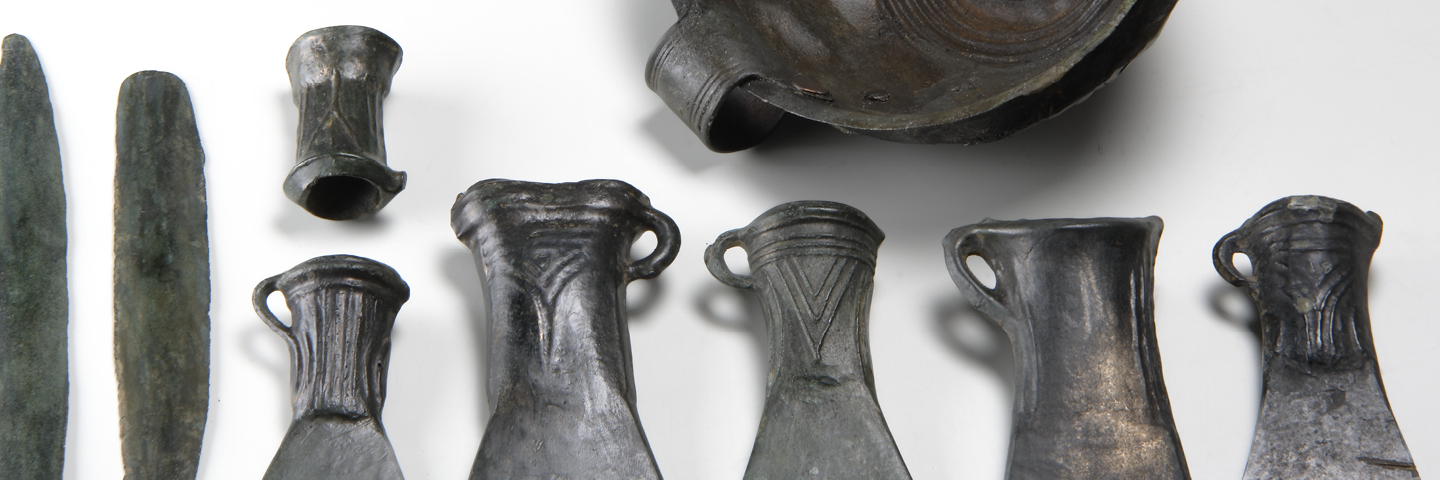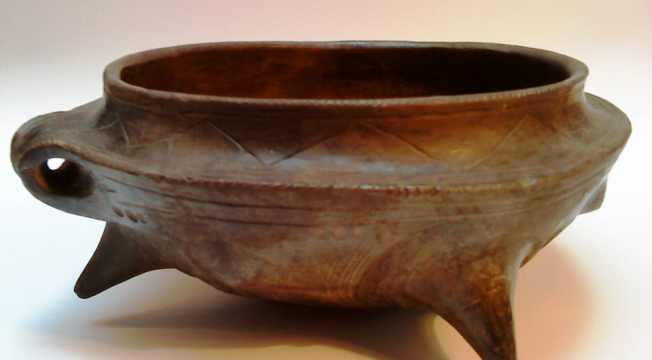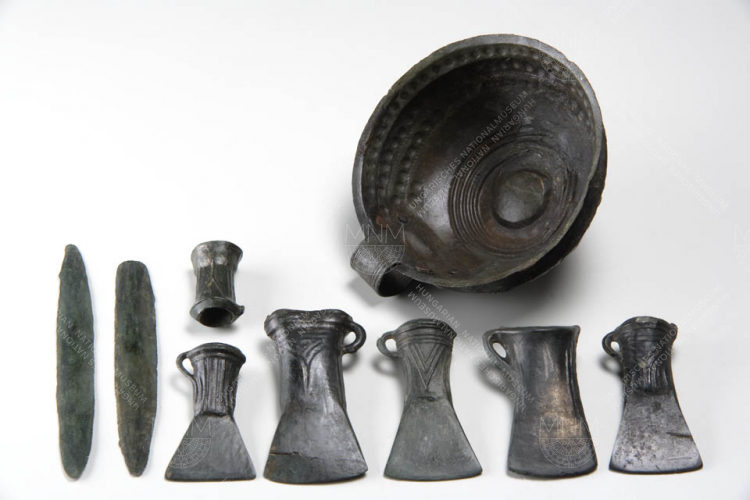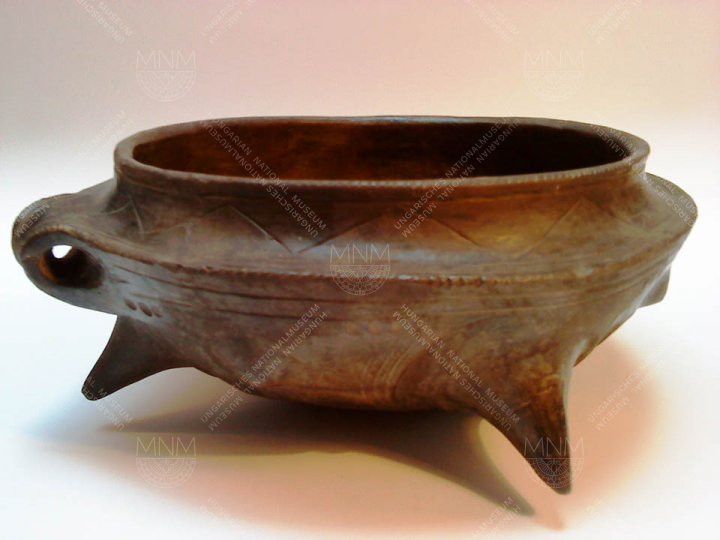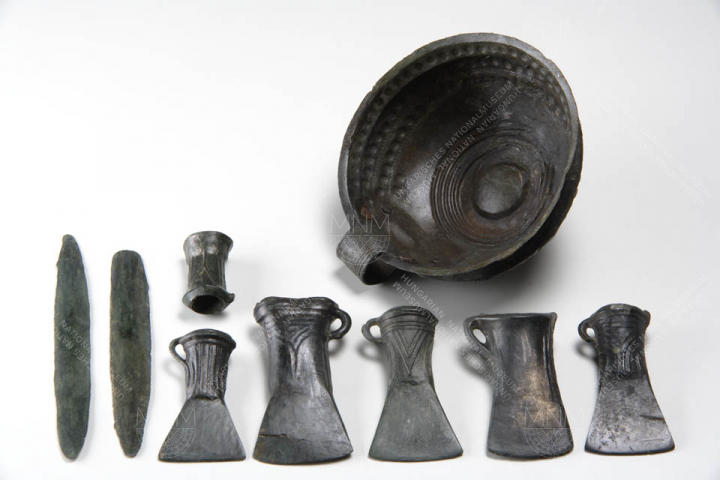
Officially, the Prehistoric Collection has been a distinct unit within the Hungarian National Museum only since 1926, despite the fact that antiquities from prehistory had been looked after and managed separately since the mid-19th century, when, out of the earlier Department of Numismatics and Antiquities, the Department of Archaeology was created with a prehistoric part possessing its own storage facilicities and its own records. Today, the Prehistoric Collection looks after many hundreds of thousands of archaeological relics, some of which are unique.
The Old Stone Age, New Stone Age, Copper Age, Bronze Age, and Iron Age finds that make up part of the Prehistoric Collection cover an enormous period. It stretches all the way from the appearance of the New Stone Age and food production in the Carpathian Basin to the beginnings of the Roman period in the same region (late 1st century BCE).
While during the 19th century the Prehistoric Collection grew as a result of quality artefacts obtained by way of donations and purchases primarily, from the turn of the 20th century additions to it have instead been finds from excavations of settlements and cemeteries. Today, too, the basis for the growth of the Prehistoric Collection is largely rescue excavations and planned excavations serving scientific purposes.
Over the last two hundred years approximately, the Prehistoric Collection has amassed material from every archaeological period in prehistory. This material is so rich and plentiful that many high-standard exhibitions could and can be organised from it, as proved by successful exhibitions at home and abroad over the last decades.
